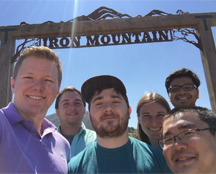Broad Advance from TSRI Chemists Dramatically Simplifies Olefin Synthesis
New method expected to replace textbook reactions, enable syntheses of many new candidate drugs and other molecules
Chemists at The Scripps Research Institute (TSRI) have discovered a new method that greatly simplifies, and in many cases enables for the first time, the making of a vast range of organic molecules.
The new method, decarboxylative alkenylation, easily turns carboxylic acids, a relatively cheap, abundant and diverse class of compounds, into alkenes (also called olefins), another large family of compounds commonly used for pharmaceuticals and other applications. It thus should facilitate the discovery and development of a great variety of new drugs and other chemical products.
“This method dramatically simplifies the syntheses of olefins; in fact, it has really changed the way I think about making molecules,” said principal investigator Phil S. Baran, Darlene Shiley Professor of Chemistry at TSRI.
The method, published in Nature, essentially supersedes reactions that have been in chemistry textbooks and in widespread industrial and academic use for decades. Chief among these is the Wittig reaction, discovered in 1954, for which Germany’s Georg Wittig was awarded a share of the Nobel Prize for Chemistry in 1979. The Wittig reaction enables the making of many olefins from precursor compounds, and even though it tends to require a many-step process, chemists have continued to rely heavily on it up to the present.
“Organic chemists have endured this burdensome 'analog' process for decades with little complaint,” Baran said. “Now with this new method we’re bringing olefination into the digital era.”
The new method originated with a breakthrough by Baran and his laboratory that was described [https://www.ncbi.nlm.nih.gov/pubmed/26835704] a year ago in the Journal of the American Chemical Society. That transformation allowed the building of many complex drug and other molecules starting from carboxylic acids, using inexpensive metal catalysts. Carboxylic acids include numerous bulk-produced chemicals, as well as many abundant natural molecules, among them the amino-acids that cells use to build proteins.
“That advance opened the door to a lot of other possibilities, and since then we’ve been addressing as many of them as we can, starting with the most important,” Baran said.
The new method enables chemists to turn carboxylic acids into olefins in relatively few steps, using nickel or iron catalysts. In one demonstration, Baran’s team produced sterol acetate, a natural olefin with potential as a drug building block, from a standard precursor in two steps—whereas the traditional procedure using the Wittig reaction requires seven steps. To show the vast scope of the new method, Baran’s team employed it to make nearly 70 diverse olefins with reactions that were greatly streamlined and simplified compared to traditional methods.
"Essentially, with this approach we are taking the most diverse functional group and converting it into the most versatile one," Baran said.
The new method allows chemists much better control over the geometry of the resulting molecules, and moreover simplifies the conceptual side of olefin synthesis. “It enables a primitive form of synthesis logic in which you can just start with a cheap compound that is structurally related and convert it with relative ease into an olefin,” Baran noted. In one demonstration, the team synthesized the natural antibiotic cladospolide, which is otherwise hard to make, starting from tartaric acid, a bulk-produced carboxylic acid that structurally resembles cladospolide.
The paper includes 15 other total or near-total syntheses from cheap starting compounds of natural products that were previously difficult or impractical to synthesize, including prostaglandins, aureonitol, and tocotrienols.
The pharmaceutical company Bristol-Myers Squibb, which has a Research Agreement with TSRI, works with the Baran Laboratory under the Agreement and is already using the new method in at least one of its drug development programs.
Baran noted that another collaborator, the contract drug-maker Asymchem, has also demonstrated the suitability of the new method for pharmaceutical manufacturing by scaling up a sample reaction to yields on the order of a kilogram.
The co-lead authors of the paper, “Decarboxylative Alkenylation,” were Jacob T. Edwards and Rohan R. Merchant, doctoral candidates in the Baran Laboratory. Other co-authors were Kyle S. McClymont, Kyle W. Knouse, Tian Qin and Lara R. Malins of TSRI; Benjamin Vokits, Scott A. Shaw and Martin D. Eastgate of Bristol-Myers Squibb; and Deng-Hui Bao, Fu-Liang Wei and Ting Zhou of Asymchem.
Funding was provided by Bristol-Myers Squibb, the U.S. Department of Defense (NDSEG fellowship) and the National Institutes of Health (F32GM117816, GM106210).
Send comments to: press[at]scripps.edu














